15 Ng. 100 Đ. Nguyễn Xiển, Thanh Xuân Nam, Thanh Xuân, Hà Nội 100000
Few names resonate with the mystique and grandeur of the ancient Silk Road quite like Kashgar. Perched at the very western edge of China, where the vast Taklamakan Desert meets the soaring Pamir Mountains, Kashgar (also spelled Kashi) is more than just a city; it's a living, breathing museum of history, a vibrant crossroads of cultures, and a timeless testament to human resilience and ingenuity. For millennia, it has been the pulsating heart of Central Asian trade, a melting pot of peoples, and a destination that promises an adventure unlike any other.
This extensive guide will take you on a journey through Kashgar's legendary past, its enduring cultural significance, its captivating attractions, and how Golden Trail Travel can unlock an unparalleled experience in this truly unique corner of the world. Prepare to be enchanted by its bustling bazaars, mesmerized by its ancient architecture, and inspired by the warmth of its people.
To truly grasp the essence of Kashgar, one must first understand its unparalleled geographical importance and the profound historical events that have shaped its identity.
Kashgar's existence is a miracle of geography. It is one of the largest and most fertile oases in Central Asia, fed by the waters of the Kashgar River and various smaller streams originating from the surrounding mountains. This vital water supply allowed a thriving civilization to flourish amidst the unforgiving vastness of the Taklamakan Desert to its east and the formidable mountain ranges of the Pamirs, Tian Shan, and Kunlun to its west, north, and south, respectively. This unique positioning made it an indispensable stop for caravans navigating the treacherous routes of the Silk Road.
Kashgar’s significance on the Silk Road cannot be overstated. It was the crucial point where the Northern and Southern branches of the Silk Road, circumventing the Taklamakan Desert, converged before continuing westward towards Persia, India, and beyond. This made it a primary hub for the exchange of goods, ideas, religions (notably Buddhism and later Islam), and technologies between China, the Middle East, and Europe. Traders, monks, soldiers, and adventurers from countless lands congregated here, leaving an indelible mark on Kashgar's character.
Kashgar's history is a turbulent yet fascinating saga of empires vying for control. It has seen the rise and fall of Chinese dynasties, the expansion of Turkic nomadic empires, the influence of Arab caliphates, and the dominance of Mongol hordes. Each successive power left its imprint, contributing to Kashgar's rich architectural styles, diverse ethnic makeup, and complex cultural heritage.
Ancient Kingdoms: Before Chinese and Islamic dominance, Kashgar was part of independent oasis kingdoms, influenced by Indo-European cultures.
Han Dynasty Control: China's influence began early, with the Han Dynasty extending its reach to secure trade routes.
Buddhist Golden Age: Like Hotan, Kashgar also had a significant Buddhist period, though less archaeological evidence remains in the city center due to later constructions.
Islamicization: From the 10th century onwards, Islam gradually became the dominant religion, leading to the construction of mosques and madrassas, and shaping the city's social and cultural fabric.
Qing Dynasty and Modern Era: After periods of Dzungar Mongol rule, Kashgar came firmly under Qing Dynasty control in the 18th century and has remained part of China since, with the region now known as Xinjiang.
Despite the relentless march of time and modernization, Kashgar has managed to retain much of its ancient charm and unique cultural identity, predominantly that of the Uyghur people.
The heart and soul of Kashgar lies in its Old City (Kashi Old Town). For centuries, this labyrinthine district of mud-brick houses, narrow alleyways, and bustling workshops was home to Kashgar's vibrant community. While parts have undergone controversial modernization efforts, significant areas have been preserved or meticulously rebuilt to reflect their original charm, offering a captivating glimpse into traditional Uyghur life.
Explore the Alleys: Wander through the intricate network of alleys, discovering hidden courtyards, traditional teahouses, and small workshops where artisans practice age-old crafts.
Traditional Uyghur Homes: Observe the distinctive architecture, often featuring intricate wooden carvings, colorful facades, and enclosed family compounds.
Local Life: Witness daily life unfolding – children playing, elders chatting, and the aroma of freshly baked bread wafting from bakeries.
Dominating the central square of Kashgar, the Id Kah Mosque (Eid Gah Mosque) is the largest mosque in China and one of the most important Islamic sites in Central Asia. Its striking yellow facade, grand gate, and spacious courtyard are breathtaking.
Architectural Marvel: Admire its unique Central Asian architectural style, a blend of traditional Islamic and local Uyghur influences.
Spiritual Hub: Observe the flow of worshippers, particularly during Friday prayers and Eid festivals, when the square comes alive with devout Muslims.
No visit to Kashgar is complete without experiencing the legendary Grand Sunday Bazaar (Etigar Bazaar or Livestock Market). For centuries, this market has been the economic lifeblood of the region, where farmers, merchants, and artisans from across Central Asia converge to buy, sell, and trade. It’s a riot of colors, sounds, and smells, a truly immersive cultural experience.
Livestock Market: Witness the raw energy of the livestock market, where camels, donkeys, sheep, and cattle are traded. It’s a remarkable spectacle of traditional commerce.
Handicrafts and Goods: Explore the myriad stalls selling everything from traditional Uyghur hats (doppas), exquisite carpets, and vibrant silks to spices, dried fruits, and everyday household goods.
Food Stalls: Sample local delicacies like "nang" (flatbread), "samsas" (baked meat pastries), "laghman" (hand-pulled noodles), and various grilled meats (kebabs).
Also known as the "Fragrant Concubine Tomb," this mausoleum is a significant Islamic holy site and an architectural gem located just outside the city. It houses the remains of five generations of the Apak Khoja family, a prominent Sufi lineage, including the legendary Iparhan (the "Fragrant Concubine"), though her direct burial here is largely mythical.
Architectural Beauty: Admire the intricate tile work, colorful domes, and beautiful gardens surrounding the complex.
Spiritual Significance: Experience a sense of reverence in this tranquil setting, observing pilgrims who come to pay their respects.
Music and dance are integral to Uyghur culture. The haunting melodies of the "dutar" (a two-stringed long-necked lute), the rhythmic beats of the "tambur," and the expressive movements of Uyghur dance are a joy to behold. Look for opportunities to experience live performances in teahouses or cultural centers.
Kashgar's cuisine is a mouth-watering fusion of Central Asian, Middle Eastern, and Chinese influences, characterized by rich flavors and hearty portions.
Polo (Pilaf): A staple, made with rice, carrots, onions, and often lamb or mutton.
Laghman: Hand-pulled noodles, usually served with a rich sauce of meat and vegetables.
Dapanji (Big Plate Chicken): A spicy and savory dish of chicken, potatoes, and peppers, often served with wide, flat noodles.
Kebabs (Kawap): Succulent grilled lamb or beef skewers, seasoned with cumin and chili.
Samsa: Baked pastries filled with spiced meat and onions.
Nang: A variety of flatbreads, from thin and crispy to thick and chewy, baked in a "tandoor" oven.
Fruits: Kashgar is renowned for its abundant and sweet fruits, especially melons, grapes, and pomegranates.
Navigating the complexities of travel in a historically rich and culturally distinct region like Kashgar requires expertise and a reliable partner. This is precisely where Golden Trail Travel excels, transforming the dream of visiting Kashgar into a seamless and profoundly enriching reality.
Golden Trail Travel possesses an intimate understanding of the logistics involved in traversing the Silk Road. From securing necessary permits and arranging comfortable accommodations to organizing reliable transportation and providing knowledgeable local guides, they meticulously handle every detail. This allows you to immerse yourself fully in the experience, free from the worries of planning.
Visit Golden Trail Travel's website at https://goldentrailtravel.com/ to explore their diverse range of tours and begin crafting your own Kashgar adventure.
Golden Trail Travel understands that every traveler is unique. They don't offer generic packages but specialize in creating bespoke itineraries that cater to your specific interests and pace.
History Buffs: Dive deep into Kashgar's past with guided tours of archaeological sites and ancient monuments.
Cultural Enthusiasts: Engage directly with Uyghur culture through cooking classes, visits to traditional workshops, and performances.
Adventure Seekers: Combine your cultural exploration with excursions into the surrounding Pamir foothills or desert fringes.
Photographers: Golden Trail Travel can guide you to the most picturesque spots and best times for capturing Kashgar's beauty.
The true magic of Kashgar lies in its people and their traditions. Golden Trail Travel prioritizes authentic encounters:
Local Guides: Their experienced local guides are fluent in multiple languages, deeply knowledgeable about Kashgar's history and culture, and serve as invaluable bridges to the local community. They can take you beyond the tourist facade, facilitating genuine interactions.
Hidden Gems: Discover traditional teahouses, family-run craft shops, and local eateries that might be off the beaten path for independent travelers.
Market Immersion: Experience the Sunday Grand Bazaar not just as a spectacle, but as an opportunity to understand the local economy and social fabric.
For the ultimate Silk Road adventure, Golden Trail Travel can seamlessly integrate your Kashgar experience with journeys to other parts of Xinjiang, or even extend into neighboring Central Asian countries. Kashgar truly feels like the edge of one world and the beginning of another, and Golden Trail Travel can help you explore both.
Karakoram Highway (KKH): For the truly adventurous, Golden Trail Travel can arrange tours along the legendary Karakoram Highway, connecting Kashgar to Pakistan, offering breathtaking mountain vistas.
Pamir Mountains: Explore the stunning high-altitude landscapes and nomadic communities of the Pamir Mountains, a true wilderness experience.
Golden Trail Travel is dedicated to promoting responsible and sustainable tourism. They work to ensure that your visit benefits local communities, respects cultural sensitivities, and minimizes environmental impact. Traveling with them means contributing positively to the preservation of Kashgar's unique heritage.
Kashgar holds a special place in the hearts of travelers and explorers for numerous reasons.
Unlike many historical sites that are mere ruins, Kashgar offers a vivid, living connection to the ancient Silk Road. Its markets, its Old City, and its traditions still echo the centuries of trade and cultural exchange.
Kashgar offers a profound immersion into Uyghur culture, distinct from both mainstream Chinese and other Central Asian cultures. This uniqueness is a powerful draw for those seeking authentic and enriching travel experiences.
From the atmospheric alleys of the Old City to the vibrant chaos of the Sunday Bazaar, and the dramatic backdrop of the mountains, Kashgar is a photographer's dream. Every corner offers a new composition, a new story to tell.
Reaching Kashgar, especially after traversing vast deserts or towering mountain passes, carries a profound sense of accomplishment and adventure. It truly feels like reaching the "edge of the world."
Despite the challenging geopolitical context, visitors often report being met with warmth, curiosity, and hospitality from the local Uyghur people, adding a deeply human element to the journey.
Q1: Where exactly is Kashgar located? A1: Kashgar (Kashi) is an oasis city located in the westernmost part of China, specifically in the Xinjiang Uyghur Autonomous Region. It sits at the western edge of the Taklamakan Desert and is surrounded by the Pamir, Tian Shan, and Kunlun mountain ranges.
Q2: What is Kashgar famous for? A2: Kashgar is famous as a crucial oasis city on the ancient Silk Road, known for its vibrant Grand Sunday Bazaar, its historic Old City, the iconic Id Kah Mosque, and its rich Uyghur culture and cuisine.
Q3: Is it safe to travel to Kashgar? A3: While security measures are noticeable in Xinjiang, tourist areas in Kashgar are generally considered safe for visitors. It's highly recommended to travel with a reputable tour operator like Golden Trail Travel who can navigate local regulations and provide expert guidance and support throughout your trip.
Q4: What are the must-see attractions in Kashgar? A4: Key attractions include the Old City, the Grand Sunday Bazaar (especially the livestock market), the Id Kah Mosque, and the Tomb of Apak Khoja. For those interested in local crafts, visiting traditional workshops is also a must.
Q5: What kind of food should I try in Kashgar? A5: You must try Polo (pilaf), Laghman (hand-pulled noodles), various kinds of kebabs (kawap), samsas, and different types of nang (flatbread). Also, don't miss the local fruits and pomegranate juice.
Q6: How can Golden Trail Travel enhance my Kashgar experience? A6: Golden Trail Travel offers tailored itineraries, provides expert local guides, handles all logistics (permits, transport, accommodation), and facilitates authentic cultural interactions, ensuring a seamless, enriching, and unforgettable journey to Kashgar and beyond.
Q7: Can I combine a trip to Kashgar with other Silk Road destinations? A7: Absolutely! Golden Trail Travel can integrate your Kashgar visit into a broader Silk Road itinerary, extending to other parts of Xinjiang or even into neighboring Central Asian countries, offering comprehensive cross-border adventures.
"My journey to Kashgar with Golden Trail Travel was an absolute dream. The Old City felt like stepping back in time, and the Sunday Bazaar was a spectacle I'll never forget. Our guide was incredibly knowledgeable and shared so many insights into Uyghur culture. Golden Trail Travel handled everything flawlessly, from visas to local transport. I felt completely safe and immersed. A truly unforgettable experience!" — Eleanor P., USA
"As a photographer, Kashgar was on my bucket list, and Golden Trail Travel helped me capture its essence perfectly. They knew all the best spots and times for light, especially in the Old City. The livestock market was mind-blowing! The whole trip was perfectly organized, and I appreciated their focus on authentic experiences. Highly recommend Golden Trail Travel for any Silk Road adventure." — David R., UK
"I was a bit apprehensive about traveling to Xinjiang, but Golden Trail Travel put all my worries at ease. Their communication was excellent, and our local guide in Kashgar was wonderful – so friendly and informative. We visited a local family, had tea, and learned about their daily life. It was a deeply personal and enriching experience. Golden Trail Travel truly cares about responsible tourism." — Sofia L., Germany
"Exploring the Id Kah Mosque and the Tomb of Apak Khoja with a knowledgeable Golden Trail Travel guide gave me such a profound appreciation for Kashgar's spiritual history. The food tours they arranged were also fantastic – I can't get enough of the Laghman! This was an adventure of a lifetime, meticulously planned and perfectly executed. Thank you, Golden Trail Travel!" — Jamal A., UAE
"I've traveled extensively, but Kashgar with Golden Trail Travel was truly unique. The raw energy of the Sunday Grand Bazaar, the ancient alleyways, and the stunning mountain backdrop – it felt like the true heart of the Silk Road. Golden Trail Travel’s attention to detail, from airport transfers to the selection of hotels, made the entire journey stress-free. If you want an authentic Kashgar experience, they are the ones to go with." — Isabelle C., France
Kashgar is a destination that transcends the ordinary. It's a place where history breathes through ancient walls, where vibrant traditions thrive amidst modern change, and where the echoes of countless journeys resonate through its bustling streets. It stands as a powerful reminder of the enduring human spirit of exploration, trade, and cultural exchange.
To truly uncover the magic of this legendary Silk Road city, an experienced and dedicated partner is invaluable. Golden Trail Travel is your gateway to an authentic and unforgettable Kashgar adventure. Their commitment to personalized service, deep local knowledge, and seamless logistics ensures that your journey will be not just a trip, but a profound immersion into one of the world's most captivating destinations.
Let the ancient call of the Silk Road guide you to Kashgar. With Golden Trail Travel, your extraordinary saga awaits.
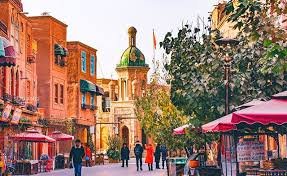
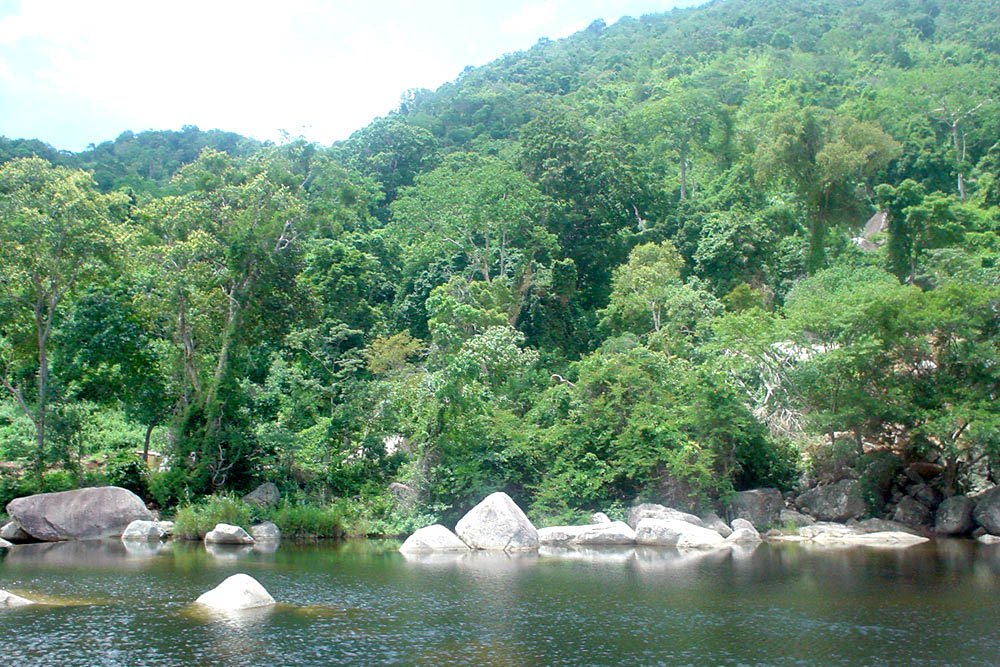
Chu Yang Sin National Park is located in Lak and Krong Bong districts, Dak Lak province, 60 km to the south-east of Buon Ma Thuot city. The national park encompasses a range of high mountains in the northern part of the Southern Annamite Mountains. The national park is centered on Mount Chu Yang Sin, which, at 2,442 m, is the highest point in the southern Annamites. The topography of the national park is characterized by steep slopes and narrow valleys.
May 28, 2025

Chu Mom Ray National Park lies in the two districts of Sa Thay and Ngoc Hoi in Kon Tum Province, central highlands of Vietnam. It is the only national park in Vietnam which shares the border with the two countries of Laos and Cambodia.
May 28, 2025
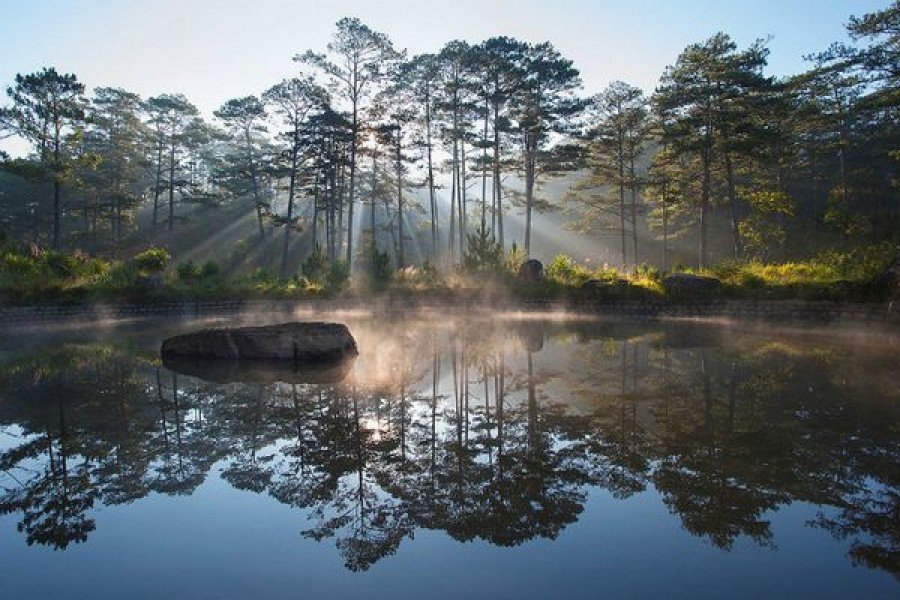
Bidoup Nui Ba National Park is situated in Lac Duong District, Lam Dong province in the central highlands of Vietnam. The park covers an area of 63,938 hectares, offering beautiful sceneries, stunning waterfalls, and diverse natural resources.
May 28, 2025
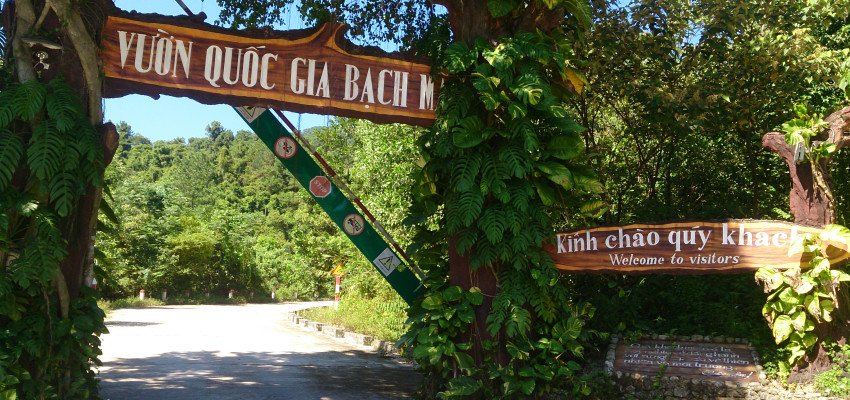
Bach Ma National Park is situated in the north central region of Vietnam, and the Annamite mountains. The national park lies on a high mountain ridge that runs west-east from the Laotian border to the East Sea at the Hai Van pass. This ridge interrupts the coastal plain of Vietnam, and, therefore, forms a biogeographical boundary between the faunas and floras of northern and southern Vietnam.
May 28, 2025
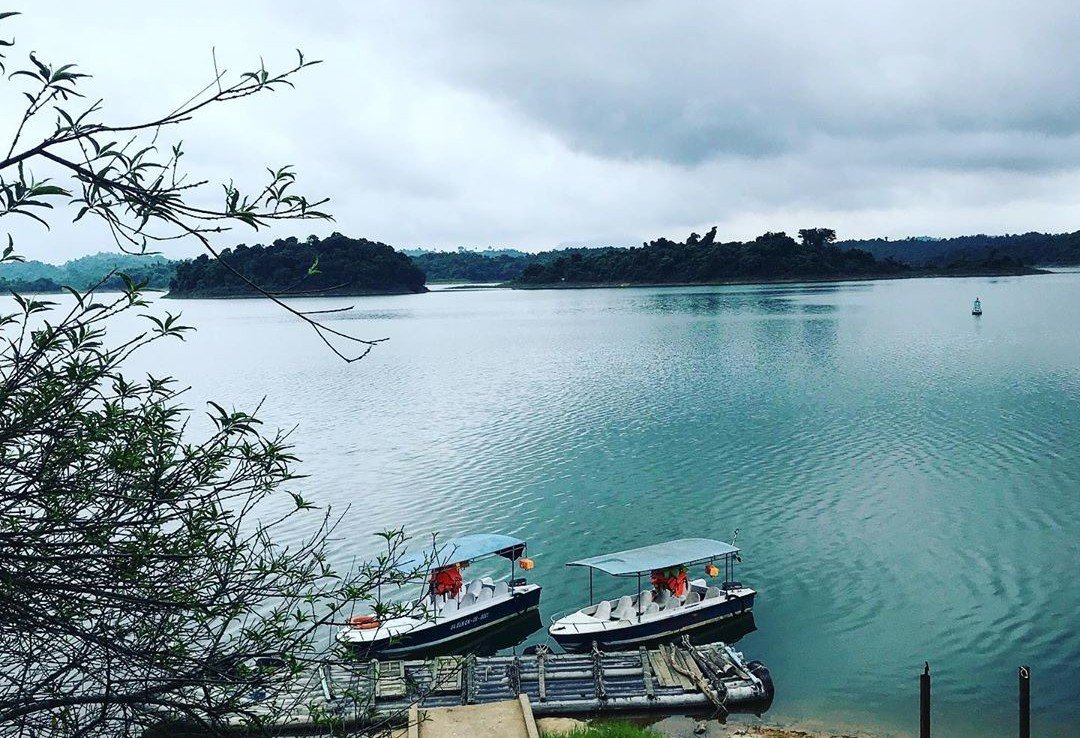
Ben En national park is situated in districts of Nhu Thanh and Nhu Xuan, Thanh Hoa Province about 200km from Hanoi. The park was established in 1992 and gradually expanded. It is not only a protected breeding ground for many rare creatures, but also an attractive destination for ecotourism.
May 28, 2025
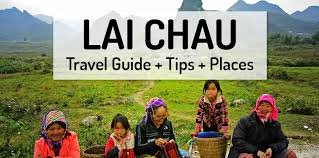
Lai Chau is a province in the northwest of Vietnam sharing borderline with Yun Nan province of China, Son La province, Dien Bien province to the west and south, and Lao Cai province to the east. The province is situated at the altitude of 1,500m above sea level, comprising high mountains, pure streams and rivers.
May 28, 2025
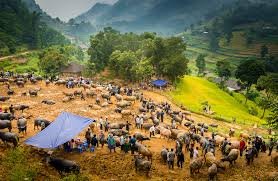
Bac Ha trekking is the best way to see Bac Ha as well as to discover its Sunday market, mountain scenery, and authentic local tribal villages.
May 28, 2025
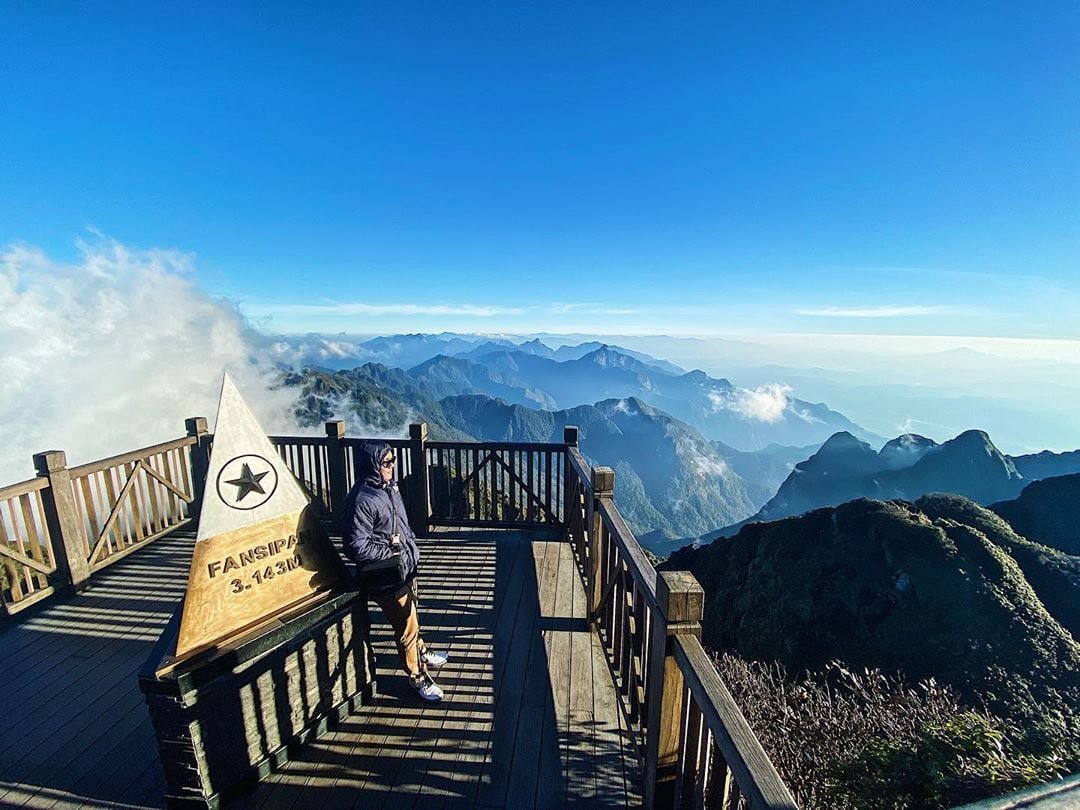
Fansipan Climbing is one of the most challenging activity in Vietnam. The Fansipan Mountain has long been the best hiking place in Vietnam. It is a favorite destination for intrepid travelers, and those who are fond of jungle trek, summit conquering, and mountain hiking.
May 28, 2025
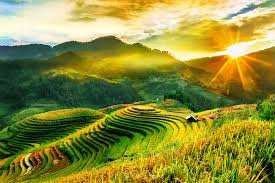
Sapa is a popular travel destination that offers the widest selection of trekking, hiking tours in Vietnam. It’s the place where a large number of tourists go to from Hanoi for some trekking through the beautiful scenery of North Vietnam’s mountains
May 28, 2025
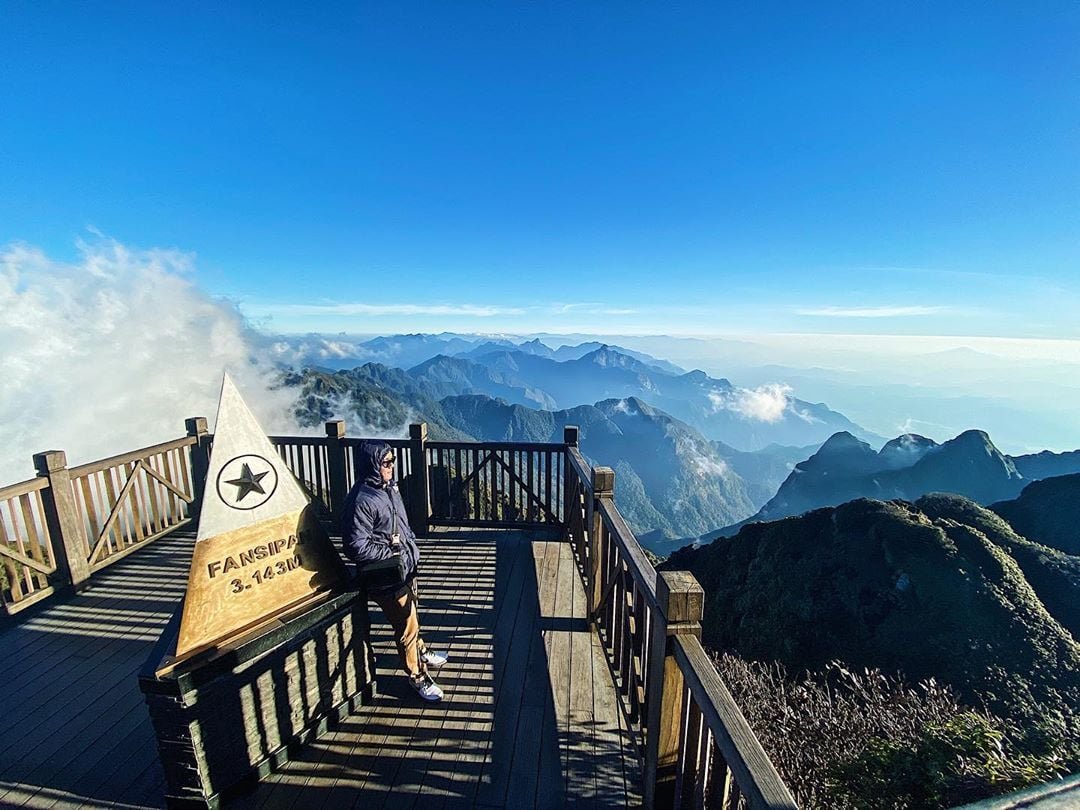
Hoang Lien National Park is situated at a height of 1,000m to 3,143m above sea level in the Hoang Lien Son Mountain Range in Sapa and Van Ban districts, Lao Cai Province, and a partly belongs to Than Uyen District, Lai Chau Province.
May 28, 2025
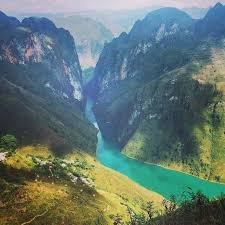
Ha Giang province is located in the northern mountainous area of Vietnam, sharing its borders with China in the north, Tuyen Quang province in the south, Cao Bang province in the east, and Yen Bai province, and and Lao Cai province in the west.
May 28, 2025
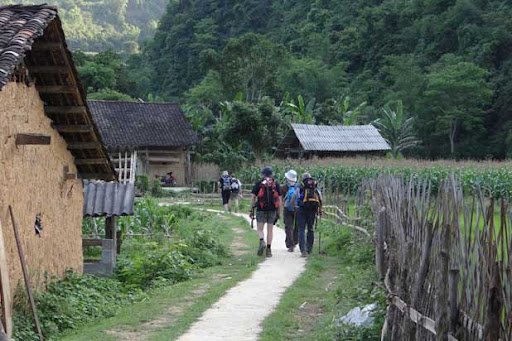
Cao Bang trekking is the best way to discover Cao Bang province as well as the northeast region of Vietnam. The place has been voted as one of top 5 trekking place in South East Asia. We at Golden Trail Travel Hiking Vietnam provide not only a wide selection of off the beaten path trekking trips in this region, but also much practical information about Cao Bang trekking, Cao Bang Vietnam trekking, Cao Bang trek, Cao Bang hiking.
May 28, 2025
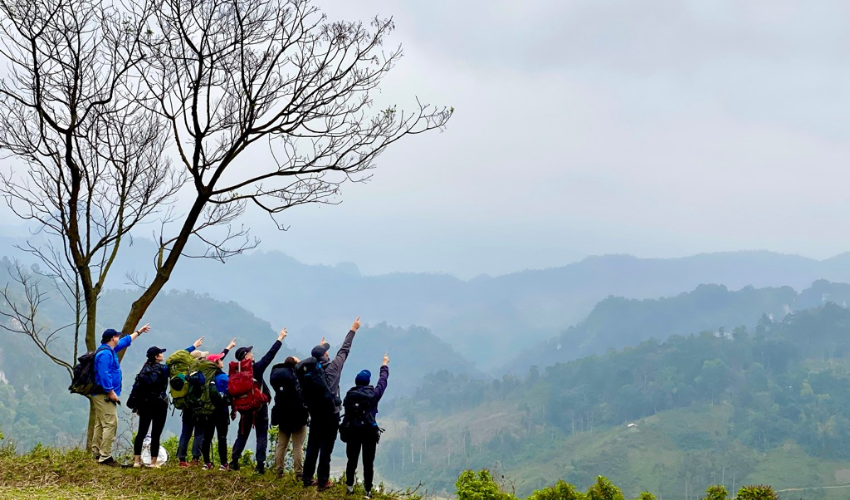
Ba Be National Park Trekking is the best way to explore the natural beauty and the unique system of flora and fauna of Ba Be. The activity also offers the chance to experience the rich ethnic culture of the Tay living within the park.
May 28, 2025
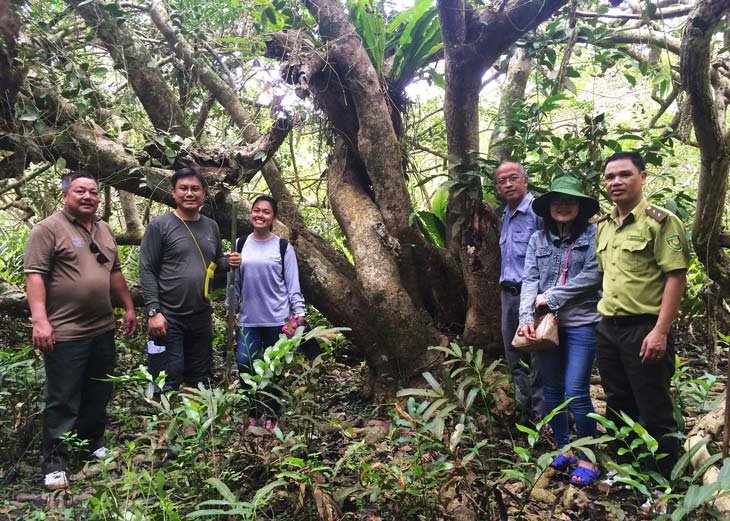
Bai Tu Long national park covers 15,783 hectares, of which forests and forest land make up 6,125 ha on more than 40 islands, and water surface accounts for 9,650 ha. It is home to 1,909 species of fauna and flora, including 72 types of animals and 30 kinds of plants listed in Vietnam’s Red Book of endangered species.
May 28, 2025

Cat Ba National Park is located in Cat Hai district, Hai Phong city in the northeast Vietnam. The national park is centered on Cat Ba island, a 28,500 ha island, which lies 20 km due east of Hai Phong city and immediately to the west of Halong bay. The national park also incorporates some of the small islands and marine waters situated to the east of Cat Ba island.
May 28, 2025
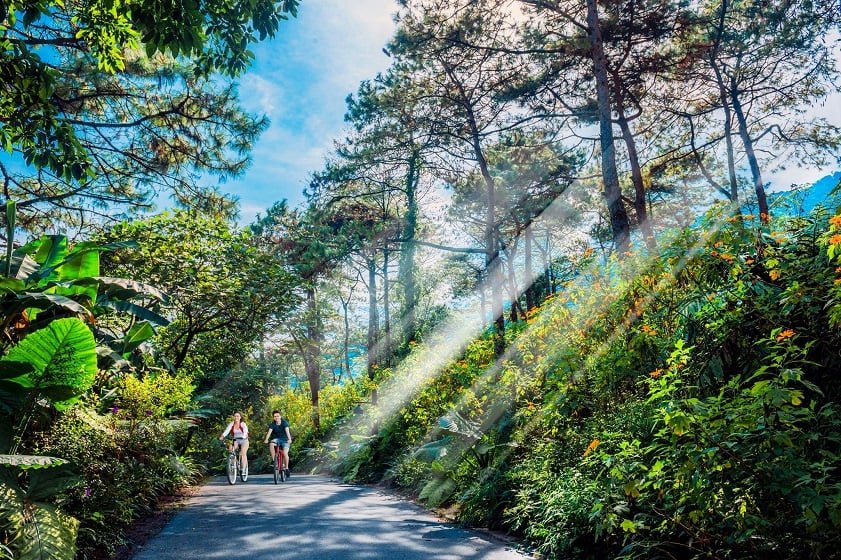
Coming to Ba Vi National Park, you will not only enjoy classic travel activities such as visit cactus gardens, Thuong Temple, French relics …you can also challenge yourself by joining a jungle trek through the park.
May 28, 2025
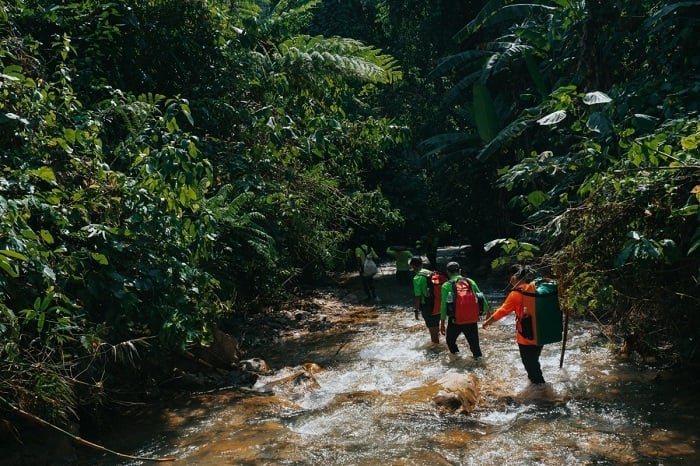
Xuan Son National Park is located 150 kilometers west of Hanoi at the entrance to the magnificent Hoang Lien Son mountain range, Phu Tho Province. The National Park is a great natural retreat and trekking area.
May 28, 2025
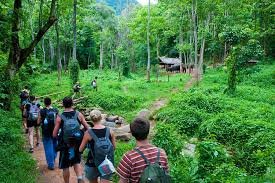
Cuc Phuong National Park is the centerpiece of Vietnam’s conservation efforts and one of the most accessible parks in Vietnam. The park is located about 120km from downtown Hanoi, and the car trip takes about 2-3 hours.
May 28, 2025
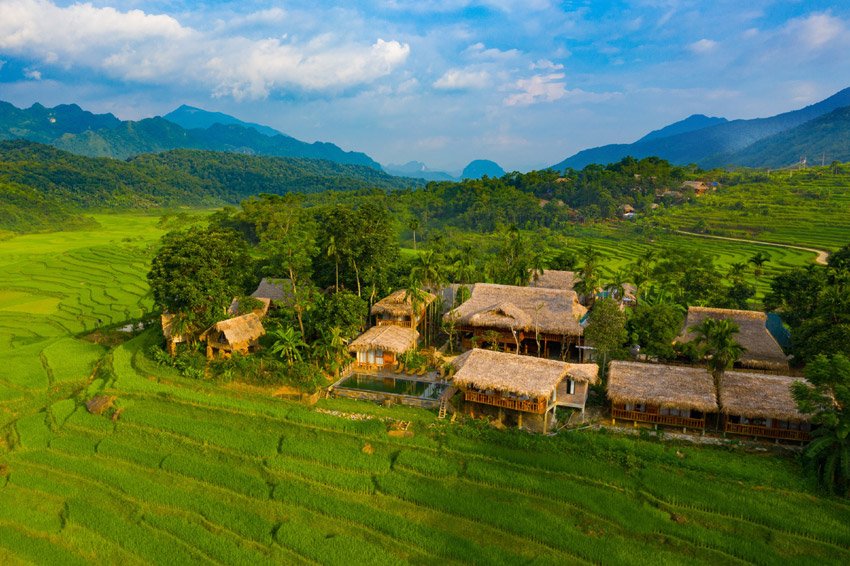
Pu Luong hiking tour is our most recommended trip since the itinerary offers you the chance to discover more the region including both the beautiful nature, rice terrace, and the authentic culture. You will have contact with different local Muong and Thai people on your Pu Luong Vietnam trek, and to experience their real, slow life.
May 28, 2025

Mai Chau Valley is located in Mai Chau District, Hoa Binh Province, approximately 135 km from Hanoi and 60 km from Hoa Binh City. Mai Chau Valley is surrounded by Thai villages scattered on the hill sides. Travelers come to Mai Chau to spend a night in a local stilt house and to experience the real life of the Thai people.
May 28, 2025